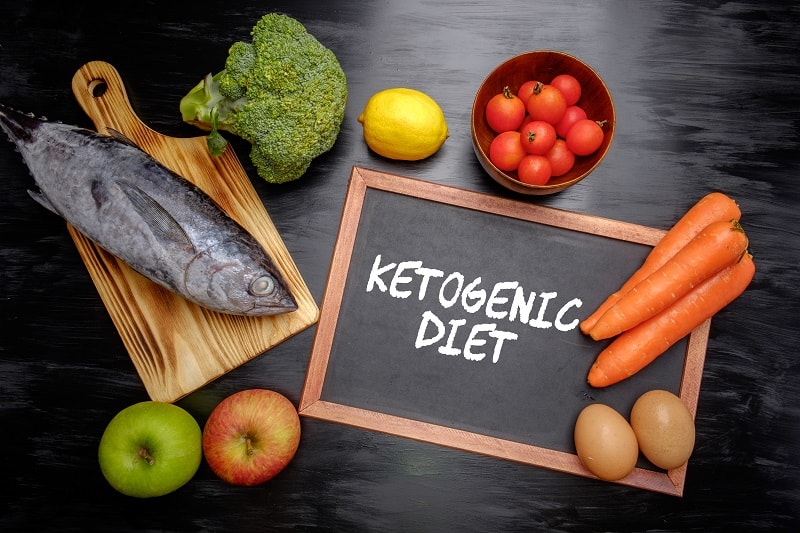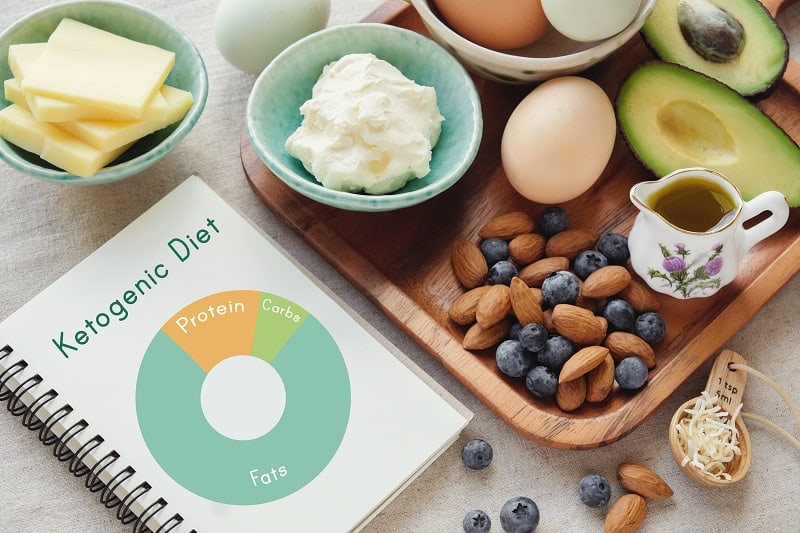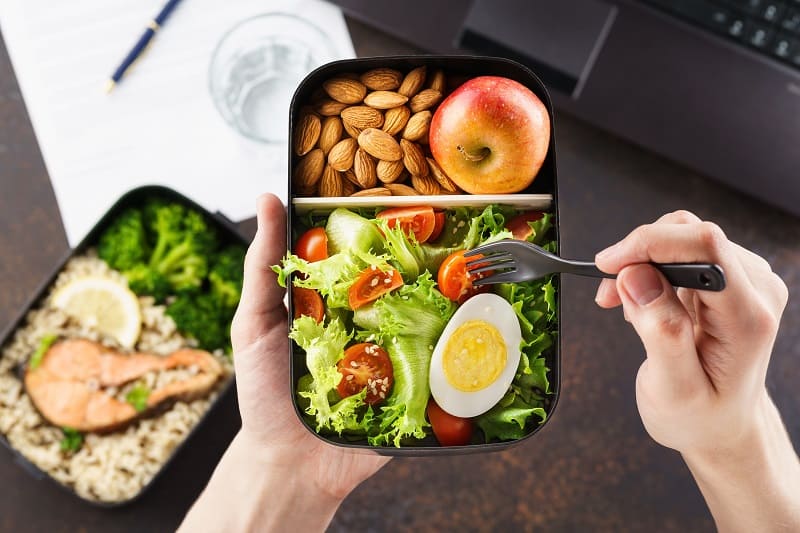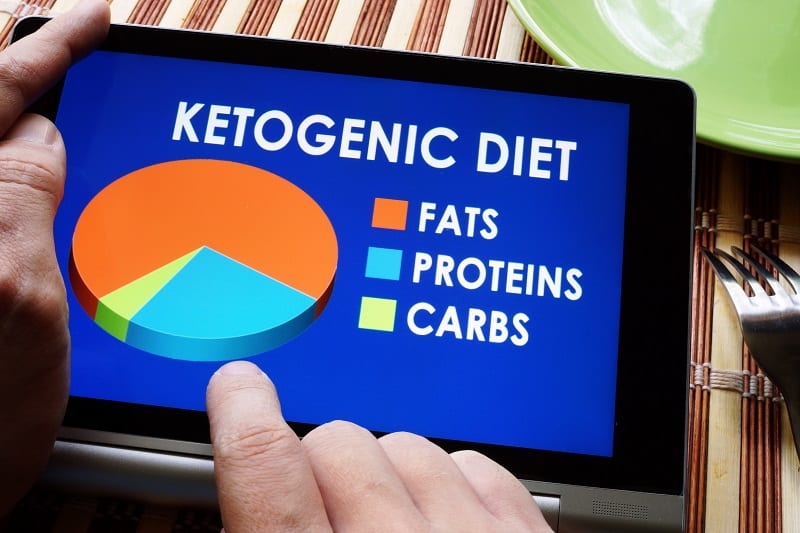
Everything You Need to Know About the Ketogenic Diet
With the keto diet, you can lose weight fast, boost energy and athletic performance, fight disease, and more. But just like every diet there’s a catch: you’ve got to seriously cut back on the carbs. Sounds easy enough, right? (For some of us anyway).
But before you part ways with (or get torn away from) your beloved carbs, we’ve caught up with Jenn LaVardera, MS RD CDN. LaVardera’s a registered dietitian, nutrition expert, and wellness specialist based in the Hamptons. She helps clients build a positive relationship with food, focusing on wellness, enjoyment, and balance.
So, what does she have to share about the keto diet? We’re hungry to find out.
What’s a Ketogenic Diet and How Does it Work?
According to LaVardera, the basic lowdown is that “the ketogenic diet is essentially a diet that restricts carbohydrates.” Sure, simple enough. “It was designed about 100 years ago,” she explains, “originally as a diet to treat children with epilepsy. In that case, it was meant to be about 75% fat, 2-4% carbohydrates, and the rest of the diet from protein.” But for the average adult looking to explore this new lifestyle, these numbers aren’t what you want to follow.
“As a weight loss diet for adults, the percentages are typically about 60% fat, 25% protein, and 15% carbohydrates, which is about 20 grams to a maximum 50 grams carbohydrates per day,” she says. Which makes more sense, given that carbohydrates are needed to fuel some of your body’s most necessary operations such as the brain, kidneys, heart, and central nervous systems.
When we consume carbohydrates, our body then converts them into glucose, the simplest energy form our body can use and because of this, it’s our body’s go-to. The way a ketogenic diet works is by restricting or depleting the body of carbohydrates (the main source of fuel our body uses), when we do this our body quickly shifts and adjusts to using stored fat as fuel – this is how so many keto dieters lose weight.
What’s the State of Ketosis and Why do People Want to Reach it?
Attached at the hip to the keto diet is “ketosis,” which is essentially the goal of the diet. “Ketosis,” LaVardera explains, “is a metabolic process where the body turns stored fats into compounds called ketone bodies (ketones).” Our liver plays a key role in virtually all metabolic processes in the body and is specifically responsible for breaking down fat and using its byproducts (ketones) to produce energy.
And these tiny ketones happen to be extremely beneficial byproducts. “We can use ketones for energy when there are not enough carbohydrates available,” says LaVardera. Plus, they offer some benefits that other molecules simply aren’t made to replicate.
“Unlike other fats, ketones can cross the blood-brain barrier and provide energy to the brain.” Which explains why so many people (and some scientific studies too) have raved about the keto diet’s ability to boost brain power and function. Since the brain consumes nearly 20% of the body’s total calories every day, it’s essential that this energy-hungry powerhouse gets the nutrients it needs to keep us up and running.
Ketones have also been shown to benefit the brain as an antioxidant, protecting the brain from damage. They work to increase the brain cell’s mitochondrial efficiency and stability, shielding us from neurodegenerative diseases down the line.
So to get into a state where the body is using ketones, you need to do a little work. “To initiate ketosis,” explains LaVardera, “it takes about three days of fasting or eating less than 20 grams of carbohydrates per day.” We suggest the latter, obviously.
Many people rave about the benefits of achieving ketosis, but mainly for the dramatic weight loss. “As a weight loss diet, ketosis can be helpful because the body starts breaking down stored fat,” LaVardera says, “and research shows metabolism doesn’t slow down ketosis.” In addition to helping break down fat, “ketosis may also be helpful for suppressing appetite by increasing the satiety hormone cholecystokinin (CCK) and preventing an increase in the hunger hormone ghrelin.”
What Are the Health Benefits of a Ketogenic Diet?
“Outside of its use for epilepsy, the main benefit of a ketogenic diet is weight loss,” she explains. But the health benefits don’t necessarily end there. “There’s also some evidence there may be some benefits for brain health and memory, longevity, improving sleep, and reducing inflammation,” says LaVardera.
We’ve spoken briefly about the benefits of ketosis for brain health and memory. But it’s worth noting that the ketogenic diet continues to be studied for its ability to improve brain function, most of them discovering that the keto diet improved cognitive functioning and alertness in children with epilepsy. Though more research is certainly needed on the correlation between this diet and one of our body’s most important organs as adults.
When it comes to longevity, which refers to expanding one’s duration of quality, healthy time alive, it turns out the keto diet could support this quest for a longer, fuller life. Scientific studies found correlations between a ketogenic diet and better memory, motor function, and an increased lifespan. This is likely due to the ketogenic diet’s ability to mimic fasting or calorie restriction, which has been proven to have comparable benefits.
Dedicated followers of the diet – as well as scientists – have found that it’s not uncommon to have trouble sleeping when first starting out, primarily due to the massive decrease in carbohydrate intake. While some research has found that over time the high-fat diet can promote a deeper, more restful sleep, other studies have found that this diet is more-so linked to disruptive sleep. So it might just be up to trial and error in seeing how the keto diet affects you.
But one thing is for sure, the keto diet has been shown to reduce inflammation in the body. By going into ketosis, your body uses fats for energy rather than sugars which can be inflammatory. Though some amount of inflammation in the body is necessary for proper functioning, a little less of the bad kind can make you feel more energized, less in pain, and reduce the risk of chronic diseases.
See more about - 8 Keys To A Healthy Diet
What Are the Health Risks of a Ketogenic Diet?
But the keto diet isn’t all about gains, and there are some health risks you should be aware of before starting. “The diet is super restrictive,” says LaVardera. And when it comes to dieting, restriction rarely leads to good things.
“There are important nutrients we get from foods that contain carbohydrates and this diet restricts nutritionally dense foods like whole grains, fruits, and even vegetables.” And there are only a few exceptions to this rule. “Berries are among the only fruits there is room for on this diet due to their somewhat low sugar content and even they need to be eaten in very small amounts.”
LaVardera also flags the high fat and animal products, such as the butter and meat needed to get in enough fat and protein as potentially worrisome. “There are also concerns about eating too many animal products and eating a diet high in saturated fat, which can increase the risk of heart disease,” she says.
Who Should Avoid a Ketogenic Diet?
Much of LaVardera’s practice is about coaching her clients on developing and maintaining a healthy long-term relationship with food, and the ketogenic diet doesn’t really tick her boxes. “I typically prefer to focus on long-term lifestyle changes,” she says.
“I most likely wouldn’t recommend this diet for anyone unless medically necessary because it’s so restrictive and not sustainable.” This is totally understandable, especially when you consider all of the fiber, micronutrients, and basic energy sources that the keto diet leaves out. Also, there really isn’t much evidence that suggests it’s safe or effective in the long term.
If you decide to go on the ketosis diet, make sure it’s only a short-term fix. “That said, people who should definitely not pursue this diet include anyone with an eating disorder due to how restrictive it is and people at risk for heart disease as a high-fat diet is linked with increased risk of heart attack,” says LaVardera.
What Type of Foods Should You Eat and Avoid on a Ketogenic Diet?
Like all other diets, there are foods that are perfectly fine and those that are completely forbidden. ”Foods people can eat fairly freely on this diet include proteins such as chicken, meat, fish and eggs and fats such as butter and oils.” Why? “These foods do not contain carbohydrates,” LaVardera explains.
“Foods people can eat moderately as they contain some carbohydrates include avocados, cheese, yogurt, nuts, and leafy green vegetables.” And what about those foods closer to off-limits? You might be surprised. “Foods to eat in small amounts include non-starchy vegetables and berries,” she says.
“Foods that must be avoided include grains, starchy vegetables, most fruit and alcohol” – which isn’t that surprising. So now that you have the basics of what foods you can and cannot eat on a ketogenic diet, one question remains.
How do you build filling, keto-friendly snacks and meals? Below, LaVardera’s given us the perfect example day of the ketogenic diet so you can see what’s on the menu. FYI – it’s pretty delicious.
An example day of the ketogenic diet:
Breakfast
- 3 eggs scrambled with spinach, cooked in butter, and topped with avocado
- A handful of raspberries
- Coffee with MCT oil
Lunch
- Salad of romaine lettuce and diced cucumber (no skin), drizzled with olive oil and lemon juice, topped with sliced grass-fed steak cooked in butter, topped with goat cheese
Snack
- A handful of blackberries and pecans
Dinner
- Zucchini noodles tossed in olive oil
- Grilled shrimp
- Sliced avocado






